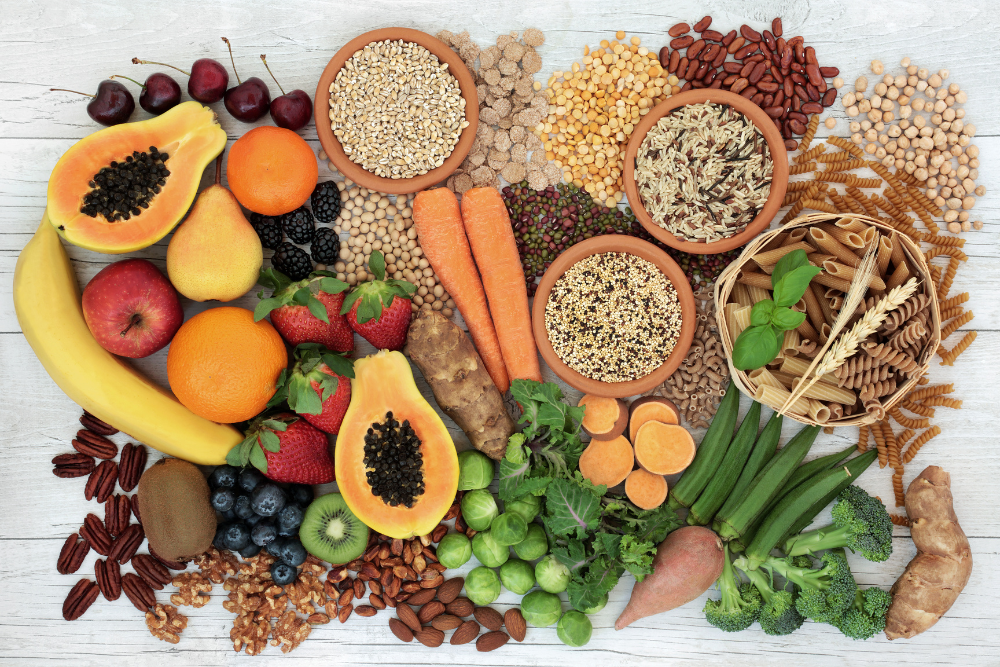
Benefits to increasing fibre in a gluten-free diet?
Fibre is an essential part of any diet. Wheat has an important role in providing fibre intake for many people, and that is why for those on a gluten-free diet there are sometimes worries about a lack of fibre. Fortunately, there are many foods that provide gluten free fibre, and plenty of support for people with coeliac disease such as gluten free products on prescription.
What is fibre?
Fibre is an essential part of everyone’s diet. It is best described as the non-digestible part of plant foods. It passes through the gut undigested, providing multiple health benefits as it goes! Fibre is important for maintaining good gut health and helps the body to regulate blood sugar levels and appetite.. Whole grains, vegetables, fruits, nuts, and legumes are all great sources of fibre. The recommended daily fibre intake in the UK is 30g for adults.
Fibre in a gluten free diet
Optimising fibre intake and eating diverse sources of fibre all helps to enhance immunity, improve diversity of microbiota, and relieves levels of constipation. These are all important to those living with coeliac disease or following a gluten-free diet, especially the constipation aspect, which is a problem for many on a gluten-free diet. It benefits those with coeliac disease to be proactive about increasing their fibre intake, increasing plant-based foods such as nuts and seeds, gluten-free oats, pulses, and whole grains that are gluten free. On top of the benefits already mentioned, increasing your fibre intake helps to reduce the risks of heart disease, type 2 diabetes, and other illnesses and diseases.
What is a gluten-free diet?
Gluten is a protein that is found in certain types of grain, such as barley, wheat, and rye. Those with coeliac disease are unable to eat any amount of gluten, as it triggers inflammation of the small intestine, causing both short-term and long-term medical complications. Moving to a gluten-free diet for the rest of your life is the only sure way to manage coeliac disease. As wheat plays an important role in fibre intake, you need to ensure you obtain enough fibre from gluten-free sources.
How to increase fibre in a gluten-free diet
There are a few ways in which you can increase your fibre intake when living a gluten-free diet. To begin with, increase your intake of fresh fruit and vegetables, maybe following the rainbow method of adding different colours of vegetables and fruit to your diet. Eat 5 portions of fruit and vegetables each day (about 80g is one portion), eat the skins wherever possible, and always think about each meal as a chance to increase your fibre intake. This could be something as simple as adding a spoonful of seeds to your bowl of porridge or yoghurt in the morning, or some berries with your lunch.
Another sure-fire way to increase your fibre intake within a gluten-free diet is to cook with beans and pulses. There are some incredible recipes out there including lentils and chickpeas that make a good starting point for a fibre-full gluten-free recipe book.
Finally, make good use of any professional assistance you can, looking for help in putting together new recipes and finding sources of gluten-free products, including the option of gluten-free prescriptions for those who qualify.
Living a gluten free diet doesn’t have to be challenging. With plenty of support through your doctor and with gluten free products available to certain people who qualify, and with different types of gluten free food and recipes available in different parts of the UK, there is a better chance than ever before to settle into life with coeliac disease without missing out on fibre in your diet.


















